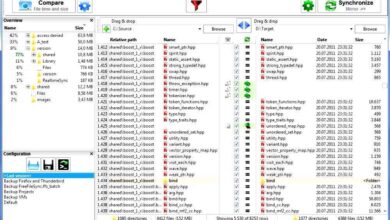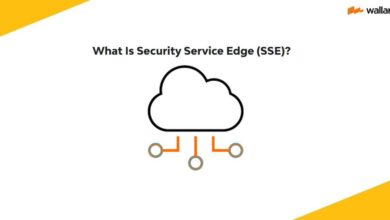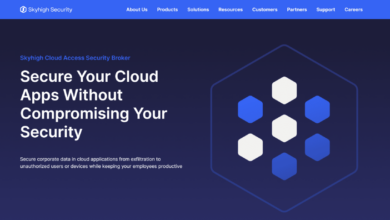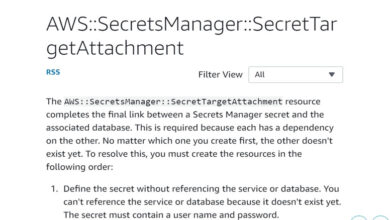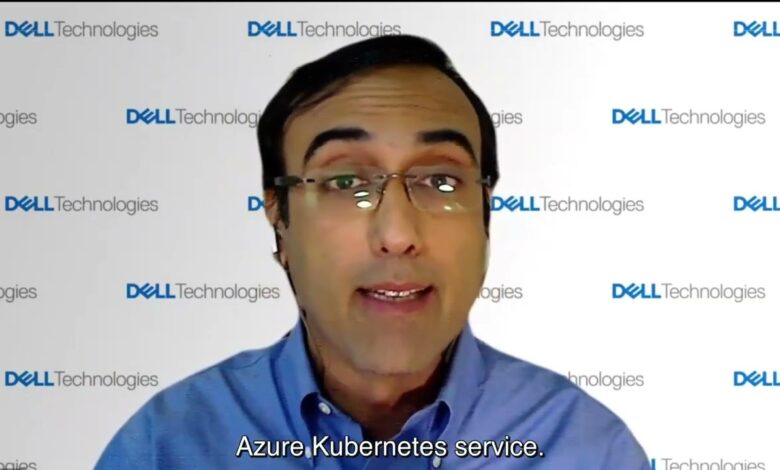
Safeguarding Data in Container Security Environments
Safeguarding data in container security environments is more critical than ever. Containers, while offering incredible agility and scalability, introduce unique security challenges compared to traditional VMs. Think about it: the speed and efficiency of containers mean vulnerabilities can spread rapidly if not properly addressed. This post dives into the crucial aspects of protecting your sensitive data within this dynamic environment, exploring everything from encryption strategies and access controls to network security and incident response planning.
We’ll unravel the complexities, offering practical advice and actionable steps to build a robust security posture.
From understanding the fundamental vulnerabilities of containerized architectures to implementing advanced data loss prevention (DLP) measures, we’ll navigate the intricate landscape of container security. We’ll explore best practices for image building, securing network communication, and establishing robust access control mechanisms. This isn’t just about theoretical concepts; we’ll delve into practical implementations and real-world examples to help you secure your data effectively.
Container Security Fundamentals
Containerization offers significant advantages in software development and deployment, but it also introduces a unique set of security challenges. Understanding these challenges is crucial for building and deploying secure containerized applications. This section delves into the core security considerations for container environments.Containerized environments, while offering agility and efficiency, present security risks that differ from traditional virtual machines (VMs).
The key difference lies in the lightweight nature of containers. They share the host operating system kernel, unlike VMs which have their own isolated kernels. This shared kernel creates a larger attack surface; a compromise in one container can potentially affect others or even the host system. Furthermore, the rapid deployment and ephemeral nature of containers can make consistent security management more complex.
Unique Security Challenges of Containerized Environments
Containers share the host OS kernel, creating a larger attack surface than VMs. A vulnerability exploited in one container could potentially compromise others or the host. The ephemeral nature of containers – their short lifespan and frequent creation and destruction – makes consistent security monitoring and management more difficult. Supply chain attacks, targeting base images or dependencies, pose a significant risk.
Finally, misconfigurations in container orchestration platforms (like Kubernetes) can lead to widespread vulnerabilities.
Common Container Vulnerabilities and Attack Vectors
Several common vulnerabilities can be exploited in containerized environments. These include vulnerabilities in the base images used to create containers, insecure configurations of the containers themselves (e.g., overly permissive network settings or insufficient resource limits), and vulnerabilities in the container runtime or orchestration platform. Attack vectors frequently involve exploiting vulnerabilities in the base image, compromising the container’s network settings to gain access to the host or other containers, or injecting malicious code during the build process.
Furthermore, insufficient access control within the container orchestration system can allow unauthorized access or modification of containers.
Container Runtime Security Technologies
Several technologies enhance container runtime security. These include:
- Security scanning tools: These tools analyze container images for known vulnerabilities before deployment, helping to identify and remediate security risks early in the development lifecycle. Examples include Clair, Anchore, and Trivy.
- Runtime Application Self-Protection (RASP): RASP solutions monitor the application’s behavior at runtime, detecting and responding to malicious activities within the container itself. This provides a layer of protection beyond static image analysis.
- Container firewalls: These firewalls provide network segmentation within the container environment, limiting the impact of a compromised container. They control traffic flow between containers and the host, enhancing isolation.
- Intrusion Detection and Prevention Systems (IDPS): IDPS solutions monitor container network traffic and system logs for malicious activity, providing alerts and automatically responding to threats.
The choice of technology depends on specific security requirements and the overall container environment architecture. A layered approach, combining multiple technologies, often provides the most robust protection.
Secure Container Image Build Process
A secure container image build process is paramount to minimizing the attack surface. This involves several key steps:
- Use minimal base images: Start with a small, well-maintained base image containing only necessary packages and libraries to reduce the attack surface.
- Regularly update base images: Keep base images updated with the latest security patches to mitigate known vulnerabilities. Automated processes are highly recommended.
- Employ multi-stage builds: Separate the build process into stages, reducing the size of the final image by excluding unnecessary build tools and dependencies.
- Utilize a secure registry: Store container images in a secure registry with access control mechanisms to prevent unauthorized access or modification.
- Perform security scans: Integrate automated security scanning into the build pipeline to identify and address vulnerabilities before deployment.
- Implement code signing: Sign container images to verify their authenticity and integrity, preventing unauthorized modifications.
Following these best practices significantly reduces the risk of deploying vulnerable container images. Automated processes are essential for maintaining security and consistency throughout the build and deployment pipeline.
Data Encryption at Rest and in Transit
Protecting data within a containerized environment requires a multi-layered approach, and encryption is a cornerstone of this strategy. Data encryption, both at rest (while stored) and in transit (while being transmitted), is crucial for maintaining confidentiality and integrity, even in the face of potential breaches. This section delves into the practical aspects of implementing robust data encryption within your containerized infrastructure.Encryption methods for containerized data vary depending on the specific needs and the sensitivity of the data.
Symmetric encryption, using a single key for both encryption and decryption, is generally faster but requires secure key management. Asymmetric encryption, employing separate public and private keys, offers better key management but is computationally more intensive. Hybrid approaches, combining the strengths of both methods, are often preferred for optimal security and performance. For example, a hybrid approach might use symmetric encryption for the bulk data encryption and asymmetric encryption to secure the symmetric key.
Symmetric Encryption Methods in Containerized Environments
Symmetric encryption algorithms like AES (Advanced Encryption Standard) are widely used for their speed and strong security. AES with a key length of 256 bits is considered highly secure for most applications. Implementing AES within a container might involve using a library or tool that integrates seamlessly with your chosen container orchestration platform (like Kubernetes). The key itself would need to be securely managed, potentially using a dedicated key management system (KMS).
ChaCha20, another symmetric algorithm, offers strong security and is often preferred in environments where performance is critical, especially on low-power devices. The choice between AES and ChaCha20 often depends on the specific performance requirements and security considerations of the application.
Asymmetric Encryption Methods and Key Management
Asymmetric encryption, using algorithms like RSA or ECC (Elliptic Curve Cryptography), is essential for secure key exchange and digital signatures. In a containerized environment, this could involve using certificates to authenticate containers and encrypt communication between them. Key management is critical with asymmetric encryption. A robust KMS, either a cloud-based service or an on-premises solution, is essential for generating, storing, and managing private keys securely.
Poor key management practices can easily negate the security benefits of strong encryption.
Key Management Best Practices in Containerized Infrastructure
Effective key management is paramount. Best practices include using a dedicated KMS, rotating keys regularly (following a defined schedule), and employing strict access control policies to limit who can access and use encryption keys. Consider using hardware security modules (HSMs) for the most sensitive keys, as they offer an extra layer of physical security. Regular auditing and monitoring of key usage and access are also critical for maintaining the integrity of your encryption system.
Failure to follow these best practices significantly increases the risk of compromise.
Performance Implications of Different Encryption Algorithms
The choice of encryption algorithm directly impacts performance. Symmetric algorithms generally offer faster encryption and decryption speeds compared to asymmetric algorithms. However, the security offered by different algorithms also varies. Using a 256-bit AES key provides a much higher level of security than a 128-bit key, but comes at the cost of slightly reduced performance. The performance impact depends on several factors, including the hardware used, the amount of data being encrypted, and the implementation of the algorithm.
Careful benchmarking is crucial to find the right balance between security and performance for your specific application.
Implementing End-to-End Encryption for Inter-Container Communication
Implementing end-to-end encryption between containers involves several steps. First, each container needs to have its own unique certificate and private key, managed securely. Second, a secure communication channel must be established, such as using TLS (Transport Layer Security) or HTTPS. Third, data must be encrypted before being sent and decrypted upon reception. This requires integrating encryption libraries into your application code.
Finally, robust key management is crucial to prevent unauthorized access to the encrypted data. A well-designed and implemented system ensures that only authorized containers can communicate and that the data remains confidential throughout its journey.
Access Control and Authorization
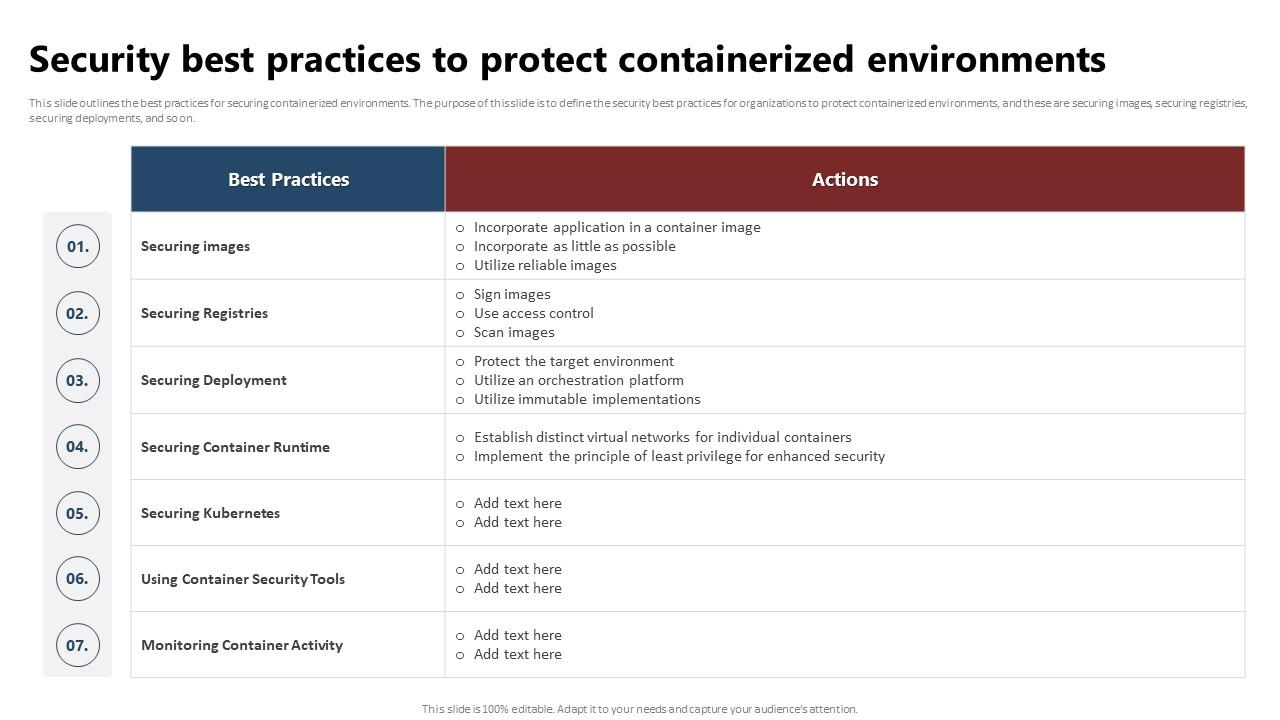
Securing containerized applications requires robust access control and authorization mechanisms. Without proper controls, unauthorized users or processes could gain access to sensitive data, leading to breaches and significant security risks. This section delves into various access control models, implementation strategies, authentication methods, and auditing techniques crucial for safeguarding containerized data.
Access Control Models in Containerized Environments, Safeguarding data in container security environments
Several access control models can be applied to containerized applications, each with its strengths and weaknesses. Choosing the right model depends on the specific security requirements and complexity of the application.
| Method | Description | Advantages | Disadvantages |
|---|---|---|---|
| Role-Based Access Control (RBAC) | Users are assigned roles, and each role has specific permissions to access resources. This simplifies management of permissions for large numbers of users. | Easy to manage, granular control, scalable, aligns well with organizational structures. | Can become complex to manage with many roles and permissions; requires careful planning and design. |
| Attribute-Based Access Control (ABAC) | Access decisions are based on attributes of the user, resource, and environment. This allows for fine-grained control based on dynamic conditions. | Highly flexible, adapts to changing environments, supports complex access policies. | More complex to implement and manage than RBAC; requires specialized tools and expertise. |
| Mandatory Access Control (MAC) | Access control is determined by security labels assigned to both users and resources. This is often used in high-security environments. | Strong security, prevents unauthorized access based on predefined security labels. | Can be rigid and inflexible; may require significant changes to existing systems. |
Implementing Role-Based Access Control (RBAC) for Containerized Data
RBAC provides a structured approach to managing access to containerized data. It involves defining roles (e.g., developer, administrator, auditor) and associating specific permissions with each role. Tools like Kubernetes’ Role-Based Access Control (RBAC) system provide mechanisms to define roles and assign them to users or service accounts. For example, a “developer” role might have read and write access to specific containers and data volumes, while an “auditor” role might only have read-only access for monitoring purposes.
This granular control ensures that users only have access to the resources necessary for their tasks.
Authentication Methods for Accessing Containerized Resources
Several authentication methods can be used to verify the identity of users or services attempting to access containerized resources.
| Method | Description | Advantages | Disadvantages |
|---|---|---|---|
| Username/Password | Traditional method where users provide a username and password. | Simple to implement and understand. | Vulnerable to password cracking and phishing attacks; requires secure password management. |
| API Keys | Unique keys used by applications to authenticate with containerized services. | More secure than username/password; can be revoked easily. | Requires careful management and rotation of keys; can be cumbersome for human users. |
| OAuth 2.0 | Delegation protocol that allows applications to access resources on behalf of users without sharing their credentials. | Enhanced security, improves user experience, supports various authentication methods. | More complex to implement than other methods; requires careful configuration. |
| Certificates | Digital certificates used to verify the identity of users or services. | Strong authentication, suitable for machine-to-machine communication. | Requires certificate management infrastructure; can be complex to manage. |
Auditing and Logging Access Attempts to Sensitive Data
Comprehensive auditing and logging are essential for detecting and responding to unauthorized access attempts. A robust system should record all access attempts, including successful and failed attempts, along with timestamps and user identities. This data can be used for security analysis, incident response, and compliance auditing. Tools like the Kubernetes audit log provide valuable information about actions performed within the cluster, while container runtimes like Docker can also generate logs related to container access.
Centralized log management systems can aggregate and analyze these logs for efficient monitoring and threat detection. Effective logging strategies should consider data retention policies and compliance requirements.
Network Security for Containers
Containerized applications, while offering incredible agility and scalability, introduce unique network security challenges. Traditional network security perimeters become blurred as containers are ephemeral and dynamically allocated. Robust network security is paramount to preventing lateral movement of attacks and protecting sensitive data within a containerized environment. This section explores key strategies for securing container networks.Network segmentation and isolation are crucial for minimizing the blast radius of a security compromise.
By dividing the network into smaller, isolated segments, you limit the ability of a malicious actor to move laterally from one container to another, even if one container is compromised. This isolation also helps to contain the impact of vulnerabilities, preventing widespread disruption. Strong network policies and firewalls are the foundation of this approach.
Securing Container Network Communication
Firewalls and network policies act as gatekeepers, controlling the flow of traffic between containers and external networks. Firewalls can filter traffic based on source and destination IP addresses, ports, and protocols, preventing unauthorized access. Network policies, often implemented through tools like Kubernetes NetworkPolicies, provide a more granular level of control, allowing you to define rules based on labels associated with containers and namespaces.
This enables the creation of fine-grained access control lists that are dynamically updated as containers are deployed and removed. For example, a policy might restrict access to a database container only to containers belonging to a specific application.
Secure Network Configurations for Kubernetes
Kubernetes provides several mechanisms for securing network communication. NetworkPolicies, as mentioned earlier, allow for fine-grained control over network traffic between pods (containers). Implementing proper NetworkPolicies is essential for securing your Kubernetes cluster. Another important aspect is using a secure container network interface (CNI) plugin. CNIs handle network configuration within the Kubernetes cluster, and choosing a secure and well-maintained plugin is critical.
Calico and Cilium are popular examples of robust and feature-rich CNI plugins that offer advanced networking capabilities and security features. They support network policies and provide visibility into network traffic within the cluster.
Implementing Micro-segmentation Strategies
Micro-segmentation takes network isolation to the next level by applying security policies at the individual container or application level. Instead of relying on broad network segmentation, micro-segmentation uses granular policies to restrict communication between specific containers, even within the same network segment. This approach minimizes the impact of a breach by limiting the spread of an attacker to only those containers directly affected.
For instance, a web server container might only be allowed to communicate with a database container and a load balancer, preventing any lateral movement to other services. This requires a deep understanding of application dependencies and careful planning of network policies.
Data Loss Prevention (DLP) Strategies
Protecting sensitive data within a containerized environment is paramount. Data loss prevention (DLP) isn’t just about security; it’s about maintaining business continuity and complying with regulations. A robust DLP strategy requires a multi-layered approach encompassing detection, prevention, and recovery mechanisms. This post delves into practical methods for implementing effective DLP within your container ecosystem.Data exfiltration from containers can occur through various means, including compromised credentials, malicious code, or misconfigured network settings.
Effective DLP strategies proactively identify and mitigate these risks.
Detecting and Preventing Data Exfiltration
Preventing data breaches requires a combination of technical controls and security best practices. This involves employing techniques like data masking, encryption, and access control lists to limit access to sensitive information. Regular security audits and vulnerability scans are crucial to identify and remediate potential weaknesses before they can be exploited. Furthermore, implementing strong network segmentation and isolating sensitive containers can significantly reduce the attack surface.
Consider using network policies to control container communication and deny unauthorized access to sensitive data.
Implementing DLP Tools in a Containerized Environment
Several DLP tools are specifically designed for containerized environments. These tools often integrate with container orchestration platforms like Kubernetes, providing visibility into container activity and enabling policy enforcement. These tools typically monitor network traffic, file system access, and application logs for suspicious activity, triggering alerts when potential data breaches are detected. Choosing the right tool depends on factors such as the size and complexity of your containerized infrastructure, the sensitivity of your data, and your budget.
Some tools offer centralized management and reporting, providing a comprehensive overview of your security posture. Others might require more hands-on configuration and management.
Monitoring Container Logs for Suspicious Activity
Container logs provide a rich source of information for detecting data breaches. Centralized log management systems allow for efficient aggregation and analysis of logs from multiple containers. By implementing robust log monitoring and analysis, you can detect unusual patterns and anomalies indicative of data exfiltration attempts. For example, frequent access to sensitive data files by unauthorized users or unusual network connections from containers to external IP addresses should trigger immediate investigation.
Setting up alerts for specific s or patterns in container logs can further enhance your monitoring capabilities. Remember to regularly review and refine your log monitoring rules to adapt to evolving threats.
Data Backup and Recovery Plan for Containerized Applications
A comprehensive data backup and recovery plan is crucial for business continuity in the event of a data loss incident. This plan should Artikel procedures for backing up container images, persistent volumes, and application data. Consider using automated backup tools that integrate with your container orchestration platform. These tools should support incremental backups to minimize storage space and backup time.
Regular testing of the backup and recovery process is critical to ensure its effectiveness. Strategies for ensuring data integrity include checksum verification and data encryption during backup and recovery. A well-defined recovery plan should include procedures for restoring data to a point before a data breach occurred, minimizing downtime and data loss. Regularly reviewing and updating your backup and recovery plan is vital to maintain its relevance and effectiveness in light of changing infrastructure and application requirements.
Consider using immutable infrastructure principles to further enhance data protection.
Vulnerability Management and Patching
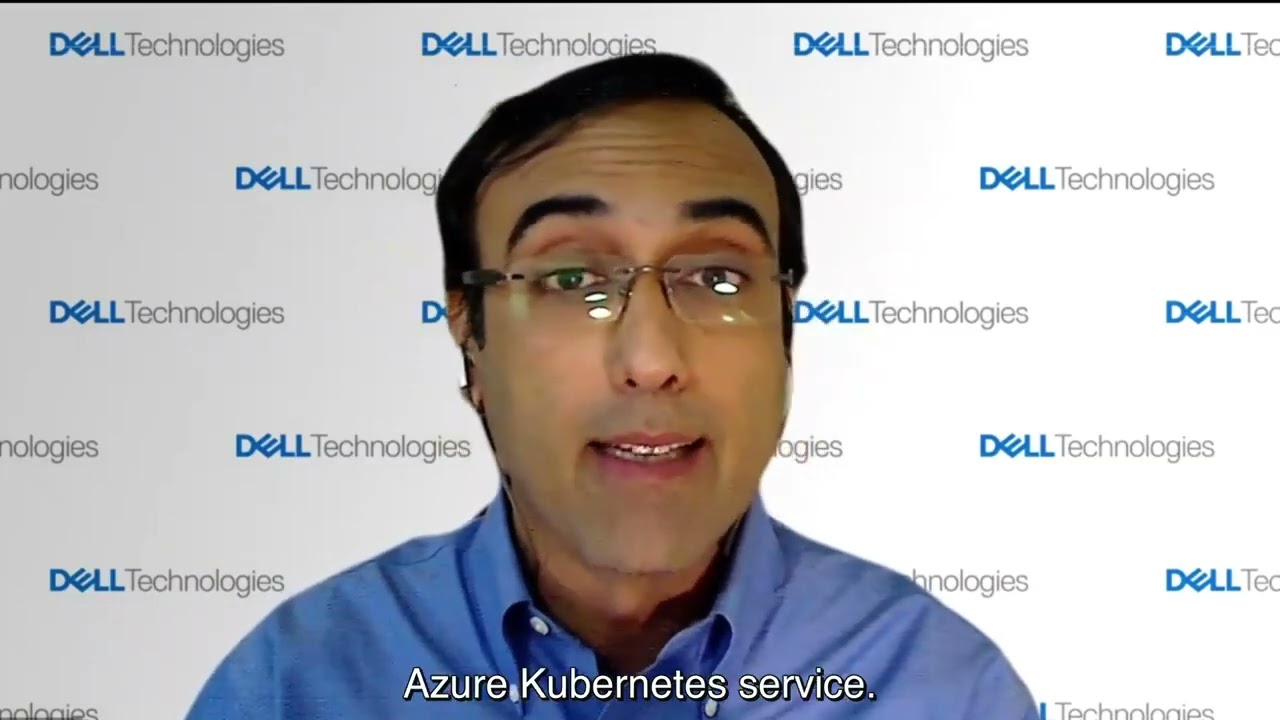
Container security isn’t complete without a robust vulnerability management and patching strategy. Ignoring this crucial aspect leaves your applications vulnerable to exploits, potentially leading to data breaches, service disruptions, and reputational damage. A proactive approach, encompassing regular scanning, automated patching, and a well-defined incident response plan, is essential for maintaining a secure containerized environment.Vulnerabilities in container images stem from various sources, including outdated base images, insecure configurations, and vulnerabilities within the application code itself.
These vulnerabilities can range from relatively minor issues to critical flaws that allow attackers complete control of your system. For example, an outdated base image might contain known vulnerabilities in the underlying operating system, while insecure configurations could expose sensitive ports or credentials. The risks associated with these vulnerabilities include unauthorized access to data, denial-of-service attacks, and the potential for malware injection.
Common Container Image Vulnerabilities and Associated Risks
Common vulnerabilities frequently found in container images include those related to the underlying operating system (OS), libraries, and the application itself. Outdated OS packages often contain known security holes, while vulnerable libraries can introduce attack vectors into the application. Unpatched applications are prime targets for exploitation. The risks vary depending on the severity of the vulnerability, but generally include data breaches, system compromise, and service disruption.
A critical vulnerability could lead to complete control of the container and potentially the entire host system.
Regularly Scanning Container Images for Vulnerabilities
A regular and automated vulnerability scanning process is paramount. This involves using tools that analyze container images for known vulnerabilities based on publicly available vulnerability databases such as the National Vulnerability Database (NVD). These tools typically work by comparing the image’s components against a database of known vulnerabilities. The process should be integrated into the CI/CD pipeline to scan images before deployment.
For example, tools like Clair, Anchore Engine, or Trivy can be integrated into your build process to automatically scan images and report any found vulnerabilities. The output of these scans should be reviewed regularly and remediated promptly.
Automated Patching Mechanisms for Containerized Applications
Automated patching is key to quickly address newly discovered vulnerabilities. This can be achieved through several methods. One effective approach is to use immutable infrastructure. This means creating new images with the patches applied instead of updating existing ones. This reduces the risk of unintended side effects from in-place updates.
Another approach involves using a configuration management tool to automate the application of security patches to running containers. This requires careful testing to ensure compatibility and prevent disruptions to services. Implementing these automated mechanisms significantly reduces the time between vulnerability discovery and remediation.
Responding to and Mitigating Discovered Vulnerabilities
A well-defined incident response plan is essential for handling vulnerabilities found in containerized environments. This plan should include steps for identifying, containing, eradicating, recovering from, and learning from security incidents. When a vulnerability is discovered, the immediate priority is to contain the affected containers, potentially isolating them from the network. Next, the vulnerability should be investigated to understand its impact and scope.
Then, a patched image should be created and deployed to replace the vulnerable container. Post-incident activities should include a review of the incident response plan to identify areas for improvement and implement preventative measures to avoid similar incidents in the future.
Security Monitoring and Incident Response
Effective security monitoring and a robust incident response plan are critical for mitigating risks in containerized environments. The dynamic nature of containers, their ephemeral lifecycle, and the distributed architecture they often support necessitate a proactive and comprehensive approach to security monitoring and incident handling. Failure to adequately monitor and respond to security incidents can lead to significant data breaches, service disruptions, and reputational damage.
Container security is paramount, especially when dealing with sensitive data. Building robust applications requires a solid foundation, and that’s where understanding development methodologies like those explored in domino app dev the low code and pro code future comes in. These approaches can help streamline the development process while still maintaining a focus on secure coding practices crucial for safeguarding data within those container environments.
Ultimately, a well-architected app, built securely, is the best defense.
Real-time threat detection and response are paramount in containerized systems due to the speed at which threats can spread across interconnected containers. A delay in detection and response can exponentially increase the impact of a security breach. Comprehensive monitoring coupled with automated response mechanisms is essential to minimize downtime and contain the spread of malicious activity.
Container Activity Monitoring Techniques
Several techniques are used to monitor container activity and detect security incidents. These include utilizing centralized logging systems to aggregate logs from all containers, employing runtime security scanners to identify malicious processes or suspicious behavior within containers, and leveraging container orchestration platform features for monitoring resource usage and container health. Real-time monitoring dashboards provide immediate visibility into the container environment, enabling prompt identification of anomalies.
Security Information and Event Management (SIEM) systems can correlate data from various sources to provide a holistic view of security events.
Real-time Threat Detection and Response
Real-time threat detection and response is crucial for minimizing the impact of security breaches in containerized environments. Automated systems that analyze logs in real-time, detect suspicious patterns, and trigger automated responses, such as isolating compromised containers or terminating malicious processes, are highly beneficial. This proactive approach significantly reduces the window of opportunity for attackers and minimizes potential damage.
Employing technologies like intrusion detection systems (IDS) and intrusion prevention systems (IPS) specifically designed for containerized environments further enhances real-time threat detection capabilities. These systems can identify malicious network traffic and take appropriate action to prevent attacks.
Incident Response Process in Containerized Environments
Investigating and responding to security incidents in a containerized environment requires a structured approach. The process typically involves: initial detection, containment, eradication, recovery, and post-incident activity. During the initial detection phase, alerts from monitoring systems are analyzed to determine the nature and scope of the incident. Containment involves isolating affected containers to prevent further spread of the threat.
Eradication focuses on removing the root cause of the incident, such as deleting malicious files or disabling compromised accounts. Recovery involves restoring systems and data to a secure state, and post-incident activity includes conducting a thorough analysis to identify vulnerabilities and improve security posture.
Comprehensive Incident Response Plan
A well-defined incident response plan is crucial for effective handling of security breaches. The plan should Artikel clear roles and responsibilities, communication protocols, and procedures for each phase of the incident response lifecycle.
Here’s a step-by-step procedure for addressing security breaches within containerized applications:
- Preparation: Establish a dedicated incident response team, define roles and responsibilities, develop communication protocols, and create a comprehensive incident response plan document.
- Detection & Analysis: Implement robust monitoring tools and establish clear alert thresholds. Analyze security logs and events to identify the nature and scope of the incident.
- Containment: Isolate affected containers, network segments, or systems to prevent further damage or compromise. This might involve terminating containers, blocking network traffic, or disabling accounts.
- Eradication: Remove the root cause of the incident. This might involve deleting malicious files, patching vulnerabilities, or removing compromised software.
- Recovery: Restore affected systems and data from backups. Verify system integrity and functionality.
- Post-Incident Activity: Conduct a thorough post-incident review to identify the root cause of the breach, assess the impact, and implement corrective actions to prevent future incidents. Document lessons learned and update the incident response plan accordingly.
Secure DevOps Practices for Containers: Safeguarding Data In Container Security Environments
Integrating security into the DevOps lifecycle is paramount for containerized applications. Failure to do so creates significant vulnerabilities throughout the application’s lifecycle, from development to deployment and beyond. A robust security posture must be baked into every stage, ensuring that security is not an afterthought but a core component of the entire process. This approach minimizes risk and ensures compliance with security standards.
Securing the Container Image Build Process
Secure image building is fundamental to container security. Compromised base images or insecure build processes can introduce vulnerabilities that propagate throughout your entire application ecosystem. This section Artikels best practices for building secure container images. A critical aspect is minimizing the attack surface by only including necessary packages and dependencies. Regularly updating base images and utilizing multi-stage builds to reduce the final image size also enhance security.
Finally, implementing robust access controls to your image repositories and utilizing immutable images further strengthens the security posture.
Automated Security Testing and Vulnerability Scanning in CI/CD Pipelines
Automated security testing and vulnerability scanning are crucial for continuous security validation. Integrating these tools into your CI/CD pipeline allows for early detection and remediation of vulnerabilities, preventing them from reaching production environments. This approach includes static and dynamic application security testing (SAST and DAST) to identify coding flaws and runtime vulnerabilities. Container image scanning tools, which analyze images for known vulnerabilities and malware, are also essential.
By automating these checks, teams can quickly identify and address security issues, reducing the risk of exploitation. For example, integrating tools like Trivy or Clair into a Jenkins pipeline allows for automatic image scanning before deployment. A failure in the security scan would trigger a pipeline halt, preventing the deployment of vulnerable containers.
Secure Configuration Management for Containerized Environments
Secure configuration management is vital for maintaining the security of containerized environments. Inconsistent configurations can lead to vulnerabilities and compliance issues. This section Artikels best practices for securing containerized environments. Utilizing configuration management tools like Ansible or Puppet enables consistent and repeatable configurations across your infrastructure. These tools allow for the automated deployment and management of secure configurations, reducing human error and ensuring consistency.
Implementing least privilege principles, where containers only have access to the resources they need, is another crucial aspect. Regularly auditing configurations and implementing automated alerts for configuration drift further enhance security. For example, Ansible can be used to enforce security policies such as disabling unnecessary services or limiting network access for containers. This automated approach ensures consistent security across all deployed containers.
Conclusive Thoughts
Securing data in a containerized environment requires a multi-faceted approach, a holistic strategy that integrates security into every stage of the DevOps lifecycle. From building secure images and implementing robust encryption to establishing vigilant monitoring and incident response plans, proactive measures are paramount. By understanding the unique challenges and leveraging the best practices Artikeld here, you can significantly reduce your risk and confidently navigate the complexities of container security, ensuring your valuable data remains safe and protected.
Expert Answers
What are some common misconceptions about container security?
Many believe that containers inherit the security of the host OS. This is false; containers need their own security measures. Another misconception is that container orchestration platforms automatically handle all security. While they offer features, robust security requires proactive configuration and management.
How often should I scan my container images for vulnerabilities?
Regularly! Ideally, integrate automated vulnerability scanning into your CI/CD pipeline. At a minimum, scan images before deployment and periodically thereafter. The frequency depends on your risk tolerance and the update cycles of your base images.
What’s the difference between encryption at rest and in transit?
Encryption at rest protects data stored on disk, while encryption in transit protects data as it moves across a network. Both are crucial for comprehensive data protection. Consider using HTTPS for in-transit and strong encryption algorithms for at-rest data.
How can I ensure data integrity in my container backups?
Employ checksum verification or digital signatures to confirm the integrity of your backups. Regularly test your restore process to ensure you can recover your data successfully.
